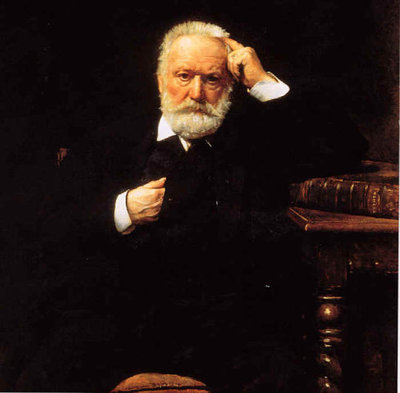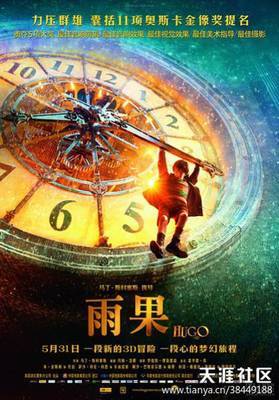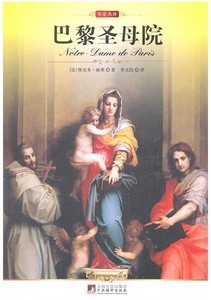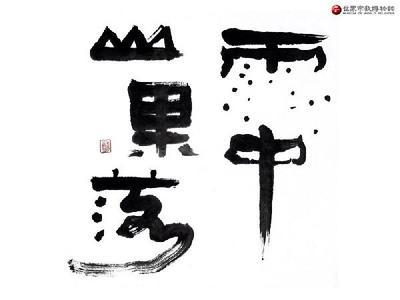《雨果・卡布里特的发明创造》根据布莱恩・塞兹尼克(Brian Selznic)的同名畅销漫画改编而来。《雨果-卡布里特的发明创造》就像一部小型的动画电影深得读者喜爱,在美国《纽约时报》畅销书排行榜了名列前茅,甚至被业内视作了《哈利-波特》之后的儿童魔幻作品的替代品。
雨果・卡布里特_雨果卡布里特的发明创造 -影片信息
◆片名:
雨果-卡布里特的发明创造《雨果・卡布里特的发明创造》◆原名:The Invention of Hugo Cabret
◆类型:魔幻片
◆导演:马丁・塞科西斯《闪亮之光》《禁闭岛》
◆制 片 人:格拉汉姆・金《无间行者》
◆上映:2011年登陆北美院线(于2010年6月1日开机)
◆剧情揭晓:影片讲述了一个名叫雨果・卡布里特(Hugo Cabret)的12岁孤儿,住在巴黎火车站的巨墙内,靠社会救济金和行窃为生。不过,他貌似清苦的生活背后却隐藏了一个天大的秘密。对于这个秘密,只有少数人无意间发现――那就是火车站的玩具商人和一个小女孩。秘密被暴露之后,事态出现了难以想象的逆转。
雨果・卡布里特_雨果卡布里特的发明创造 -主演actor
阿沙・巴特菲尔德(Asa Butterfield)<男主角>科洛・格蕾斯・莫瑞兹(Chloe Grace Moretz)<女主角>本-金斯利(Ben Kingsley)<成年演员>萨莎・拜伦・科恩(Simon Baron-Cohen)<成年演员>STAFF:
裘德-洛雷-温斯顿克里斯托夫-李海伦-迈克伊弗朗西斯-德拉托尔理查德-格里菲斯
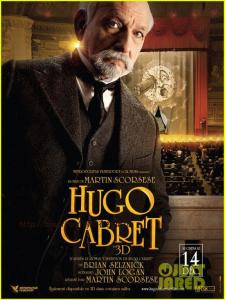
雨果・卡布里特_雨果卡布里特的发明创造 -幕后New
马丁・塞科西斯★刚刚在第67届金球奖上被授予终身成就奖的大导演马丁・塞科西斯,最近又想涉及新的电影题材――拍摄一部儿童魔幻片《雨果・卡布里特的发明创造》(The Invention of Hugo Cabret),影片的制片人是马丁的老搭档格拉汉姆・金(合作过《无间行者》)。最近几年,马丁一直在挑战各种类型电影,2007年拍摄了音乐题材的纪录片《闪亮之光》,2009年则拍了一部恐怖片《禁闭岛》,该片由他的爱将李奥纳多・迪卡普里奥主演,将在本月登陆北美院线。马丁2007年就得到了原著的电影拍摄权,但直到现在才有机会正式开拍。《雨果・卡布里特的发明创造》是马丁第一次碰触儿童题材,令人相当期待。
根据最新消息,影片还将打造成一部3D电影,这也是马丁向技术发起的一次挑战。
★《雨果-卡布里特的发明创造》曾物色过很多适合拍摄儿童电影的导演,比如阿沙・巴特菲尔德《了不起的狐狸爸爸》的韦斯-安德森、《野兽王国》的斯派克-琼斯等等,但最终马丁选定了这个剧本,并打算做一次难得的尝试。最近几年,马丁一直在挑战各种题材,比如音乐题材的纪录片《闪亮之光》,恐怖片《禁闭岛》,而《雨果-卡布里特的发明创造》是马丁首次碰触儿童题材,令人期待。阿萨-巴特菲尔德今年刚满13岁,和原著中的12岁基本符合,他已经拥有了相当丰富的表演经验,之前出演了倍受好评的《第二滴血》和《穿条纹睡衣的男孩》等影片,他有可能成为下一个“哈利-波特”式的爆红童星;13岁女孩科罗-莫瑞兹今年也开始迎来好运,主演的《海扁王》和《小屁孩日记》都将在近期登陆北美院线。
雨果・卡布里特_雨果卡布里特的发明创造 -同名漫画
布莱恩《雨果-卡布里特的发明创造》绘本◆书名:The Invention of Hugo Cabret◆外 文 名:哈利波特替代者:雨果・卡布里特的发明和创造
◆作者:布莱恩・塞兹尼克(Brian Selznic)
◆出 版 社: Scholastic Press、2007-01-30 (2007年1月30日)
◆精装:544页
◆开本:32开
◆I S B N:0439813786
◆条 形 码:9780439813785
◆产品尺寸及重量:21 x 15.4 x 5.4 cm、 1.2 Kg
◆A S I N:B0011XWY6S
雨果・卡布里特_雨果卡布里特的发明创造 -内容简介
Hugo Cabret,这个住在巴黎火车站巨墙内的孤儿,靠着社会救济金和行窃,勉强过日。但他看似简陋而清苦的生活,其实却隐藏了一个极大的秘密。但这个秘密,却无意间被火车站的玩具零售商和一个热爱书籍的小女孩发现了。Hugo该怎么做,才能不让他隐藏的身份被揭露呢?而他的真实身份又是什么呢?这本New York Times童书最佳销售排行榜上,连续十周让哈利波特也敬陪末座的魔幻故事,结合了绘本和小说的两种特性,超过三百页的连续插画,让整本书看起来像是部小型的动画电影,生动地将这个少年的魔幻人生呈现出来。
Book Description
Orphan, clock keeper, and thief, Hugo lives in the walls of a busy
A Letter from Brian Selznick
Dear readers,
When I was a kid, two of my favorite books were by an amazing man named Remy Charlip. Fortunately and Thirteen fascinated me in part because, in both books, the very act of turning the pages plays a pivotal role in telling the story. Each turn reveals something new in a way that builds on the image on the previous page. Now that I’m an illustrator myself, I’ve often thought about this dramatic storytelling device and all of its creative possibilities.
My new book, The Invention of Hugo Cabret, is a 550 page novel in words and pictures. But unlike most novels, the images in my new book don't just illustrate the story; they help tell it. I've used the lessons I learned from Remy Charlip and other masters of the picture book to create something that is not a exactly a novel, not quite a picture book, not really a graphic novel, or a flip book or a movie, but a combination of all these things.
I began thinking about this book ten years ago after seeing some of the magical films of Georges Méliès, the father of science-fiction movies. But it wasn’t until I read a book called Edison's Eve: The Quest for Mechanical Life by Gaby Woods that my story began to come into focus. I discovered that Méliès had a collection of mechanical, wind-up figures (called automata) that were donated to a museum, but which were later destroyed and thrown away. Instantly, I imagined a boy discovering these broken, rusty machines in the garbage, stealing one and attempting to fix it. At that moment, Hugo Cabret was born.
A few years ago, I had the honor of meeting Remy Charlip, and I'm proud to say that we've become friends. Last December he was asking me what I was working on, and as I was describing this book to him, I realized that Remy looks exactly like Georges Méliès. I excitedly asked him to pose as the character in my book, and fortunately, he said yes. So every time you see Méliès in The Invention of Hugo Cabret, the person you are really looking at is my dear friend Remy Charlip, who continues to inspire everyone who has the great pleasure of knowing him or seeing his work.
Paris in the 1930's, a thief, a broken machine, a strange girl, a mean old man, and the secrets that tie them all together... Welcome to The Invention of Hugo Cabret.
Yours,
Brian Selznick
Brian Selznick on a "Deleted Scene" from The Invention of Hugo Cabret
This is a finished drawing that I had to cut from The Invention of Hugo Cabret. I was still rewriting the book when I had to begin the final art. There was originally a scene in the story where this character, Etienne, is working in a camera shop. On one of my research trips to Paris I spent an entire day visiting old camera shops and photographing cameras from the 1930's and earlier, as well as the facades of the shops themselves. I researched original French camera posters and made sure that the counter and the shelves were accurate to the time period. I did all the drawings in the book at 1/4 scale, so they were very small and I often had to use a magnifying glass to help me see what I was drawing. After I finished this drawing I continued to rewrite, and for various reasons I realized that I needed to move this scene from the camera shop to the French Film Academy, which meant that I had to cut this picture. I tried really hard to find ANOTHER moment when I could have Etienne in a camera shop, but, as painful as it was, I knew the picture had to go. I'm glad to see it up on the Amazon website because otherwise no one would have ever seen all those tiny cameras I researched and drew so carefully!
--Brian Selznick
在线阅读该书籍
 爱华网
爱华网